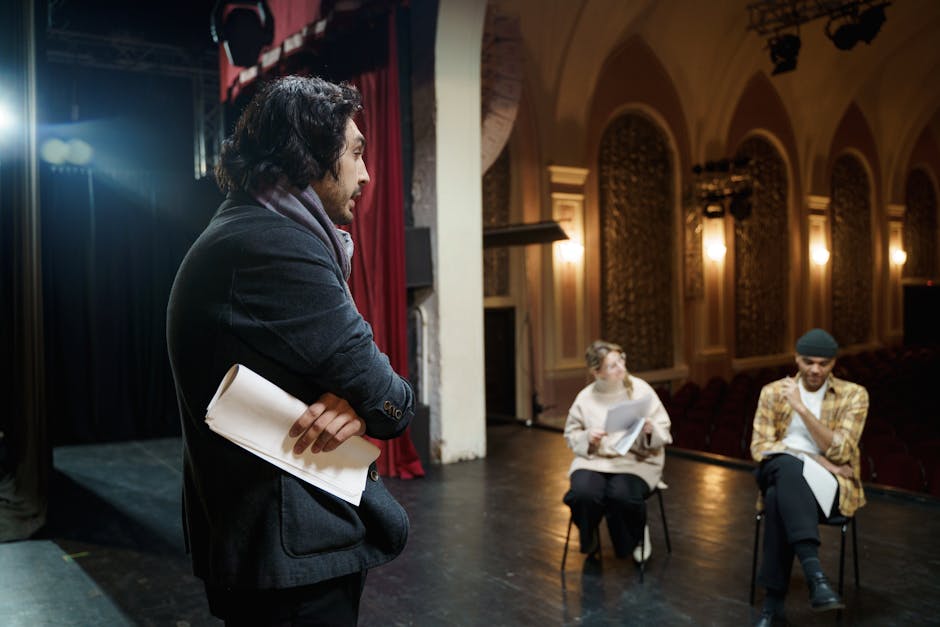Harmonious Workspaces: 20 Classical Composer-Inspired Meeting Room Names
“Elevate your workplace ambiance with 20 meeting room names inspired by classical composers. This article explores creative naming ideas that blend culture and professionalism, offering a unique touch to your office space while honoring musical legends. ”

Harmonious Workspaces: 20 Classical Composer-Inspired Meeting Room Names
In the symphony of workplace design, every element plays a crucial role in creating a harmonious environment. One often overlooked yet impactful aspect is the naming of meeting rooms. By drawing inspiration from classical composers, organizations can infuse their spaces with a touch of elegance, culture, and creativity. Let's explore 20 classical composer-inspired meeting room names that will strike a chord with your team and visitors alike.

The Maestros of Meeting Spaces
-
Bach's Baroque: A nod to the intricate and structured compositions of Johann Sebastian Bach.
-
Mozart's Melody: Capturing the light and playful essence of Wolfgang Amadeus Mozart's works.
-
Beethoven's Symphony: Reflecting the power and emotion of Ludwig van Beethoven's masterpieces.
-
Chopin's Nocturne: Evoking the romantic and dreamy qualities of Frédéric Chopin's night-inspired pieces.
-
Tchaikovsky's Ballet: Bringing the grace and grandeur of Pyotr Ilyich Tchaikovsky's ballet scores to your meetings.
-
Vivaldi's Seasons: Inspired by Antonio Vivaldi's "Four Seasons," perfect for a room that adapts to changing needs.
-
Wagner's Opera: For those grand, epic discussions, channeling the dramatic flair of Richard Wagner.
-
Debussy's Impressions: Ideal for brainstorming sessions, mirroring Claude Debussy's innovative approach.
-
Handel's Oratorio: Suitable for presentations and speeches, echoing George Frideric Handel's vocal compositions.
-
Schubert's Lied: A cozy space for intimate discussions, inspired by Franz Schubert's lyrical songs.

Composing the Perfect Meeting Environment
-
Brahms' Intermezzo: A tranquil space for brief, focused meetings, inspired by Johannes Brahms' short piano pieces.
-
Liszt's Rhapsody: For energetic brainstorming sessions, channeling Franz Liszt's passionate compositions.
-
Rachmaninoff's Concerto: A room for collaborative efforts, reflecting Sergei Rachmaninoff's complex piano concertos.
-
Stravinsky's Rite: Perfect for innovative discussions, inspired by Igor Stravinsky's groundbreaking works.
-
Mendelssohn's Overture: An ideal space to kick off projects, echoing Felix Mendelssohn's lively overtures.
-
Grieg's Hall: A nod to Edvard Grieg, suitable for meetings that require a touch of Nordic inspiration.
-
Puccini's Aria: For presentations that need to captivate the audience, inspired by Giacomo Puccini's operatic arias.
-
Dvořák's New World: Ideal for discussions on expansion and new ventures, inspired by Antonín Dvořák's "New World Symphony."
-
Saint-Saëns' Carnival: A playful space for creative meetings, reflecting Camille Saint-Saëns' whimsical "Carnival of the Animals."
-
Elgar's Enigma: Perfect for problem-solving sessions, inspired by Edward Elgar's mysterious "Enigma Variations."
Orchestrating a Harmonious Workplace
Incorporating these classical composer-inspired names into your meeting rooms does more than just add a touch of sophistication to your office space. It creates talking points, sparks curiosity, and can even inspire creativity among your team members. This approach to naming contributes to a positive workplace culture, which is essential for a thriving organization.

Moreover, these names can serve as subtle reminders of the qualities embodied by these great composers – innovation, dedication, and the pursuit of excellence. They can inspire your team to approach their work with the same level of passion and creativity.
Implementing Your Musical Meeting Rooms
When implementing these names, consider the following tips:
-
Visual Cues: Incorporate subtle visual elements related to each composer or their works in the respective rooms.
-
Educational Opportunity: Include brief information about the composer near the room entrance, turning your office into a learning space.
-
Thematic Decor: Align the room's decor with the composer's era or style, enhancing the overall experience.
-
Acoustic Considerations: Where possible, consider the acoustic properties of each room to match its musical namesake.
-
Rotating Themes: Consider rotating the names annually to keep the concept fresh and expand cultural knowledge.
Conclusion: A Symphony of Productivity
By adopting these classical composer-inspired meeting room names, you're not just labeling spaces; you're creating an environment that resonates with culture, creativity, and sophistication. This approach can transform mundane meetings into inspiring sessions, potentially boosting productivity and employee engagement.
Remember, the key to successful workplace design is creating an atmosphere that motivates and inspires. With these musically-inspired room names, you're well on your way to composing a workplace symphony that will be music to everyone's ears.